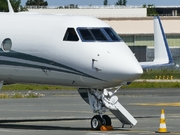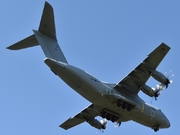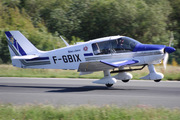Dépêches
Fitch Affirms Long Beach Airport, California Implied Sr Lien Rtg at 'A-'; Outlook Stable
Dépèche transmise le 7 août 2009 par Business Wire
NEW YORK--(BUSINESS WIRE)--Fitch Ratings affirms the 'A-' implied senior lien revenue bond rating to the City of Long Beach Airport, California (LGB or the airport). The revenue bond lien, of which there are no bonds outstanding at this time and none anticipated until late 2009 are secured by a senior lien on net revenues of the Long Beach Airport. The Rating Outlook is Stable.
The 'A-' implied rating reflects the airport's location and the underlying demand within the greater Los Angeles air trade service area, favorable enplanement trends even in the current economic downturn, and very efficient and generally low cost facilities for passenger airlines. The airport's passenger base is 98% origination and destination (O&D), exhibits a solid and growing demand for air passenger service to over 25 markets, an adequate balance sheet and good financial operation. Credit concerns include the very high single carrier concentration levels (79% by JetBlue Airways), the potential for additional leverage and its impact on airport finances, competitive region served by multiple airports, and the overall current state of the airline industry and regional economy.
The Stable Outlook reflects LGB's strong and positive enplanement performance contrasted by other airports within the region that are reporting double digit declines. The Outlook also reflects LGB's ability to maintain a low cost per enplanement over the next three- to five-year period, ensuring its low cost position in the Los Angeles air basin.
Also credit relevant is the history of community-driven long-term noise litigation and the resultant settlement agreement that established a strict noise compatibility ordinance that ultimately constrains enplanement growth. Under the noise compatibility ordinance, commercial flight activity is limited to 41 commercial flights and 25 commuter flights, serving as slot constraints. Between 2003 and 2008 passenger enplanements grew on average annually at 1%. In recent history, the airport's enplanements demonstrated its resilience having withstood the withdrawal of air service by American Airlines in 2006, which quickly bounced back to near historic levels. Over the decade JetBlue Airways has been the driver of enplanements at LGB since it began service in 2001 by establishing its west coast hub at the airport. JetBlue's market share has steadily increased over the decade to an estimated 79% of the airport's enplanements in 2009. The next largest carriers providing service at the airport are the Alaska Air Group (inclusive of both Alaska Airlines and Horizon Air) and US Airways serving 10% and 6% of the enplanements. A major reduction or loss of service by JetBlue would likely result in short-term operational and financial implications for the airport. However, the local market size and limits on airport operations should help LGB restore service to the current noise ordinance limits.
Between 2003 and 2008 the airport's finances remained solid for an airport in the 'A' category, but the financial flexibility may change as the airport contemplates additional leverage. Total operating revenues outpaced operating expense growth, increasing on average annually at 5.8% and 9.6%, to reach $30 million and $28 million, respectively. This imbalance is largely related to the additional staff needed during this period to adequately support the expanded air service at the airport. Serving as a stabilizing factor to this imbalance over this period was that the airport began collecting passenger facility charge revenues (PFCs) which represented over $4 million annually (collected at a $3.00 rate) and are projected to be over $6 million annually (collected at a $4.50 rate) over the next three- to five-year period. The airport has a healthy mix of revenues with concession, parking, fixed base operator and real estate generating nearly 75% of the airport's revenues. The airport is only reliant on an estimated 25% of its revenues from the airlines, which has historically constrained its cost per enplanement (CPE) to levels between $3.50-$5.50, very low for the region.
The airport has a relatively modest capital plan with the two largest projects that would likely require some form of debt finance including a parking garage (currently estimated at $45.8 million) and a terminal (currently estimated at $35 million). Design plans and the scope of the project are presently under consideration for the parking garage with an expectation for a debt issuance to occur in late/early 2009-2010. Design plans for the terminal are expected to trail the parking garage with an expected debt issuance in the 2010 or 2011 time frame. The parking fees generated from the garage are expected to maintenance the related debt for the garage, while an estimated 80% of PFC revenues would be eligible to service the related debt for the terminal. Due to the very early planning stages for both projects and related finance plan, Fitch plans to evaluate the projects nearer to a proposed issuance date.
The airport is located between major business and tourist destinations between Los Angeles and Orange Counties, with convenient access to the major freeway links in Southern California. Long Beach Airport is owned by the City of Long Beach. The mayor and the city council of Long Beach serve as the board of directors and set policy for the airport. The airport manager and airport staff oversee day-to-day operations.
Fitch's rating definitions and the terms of use of such ratings are available on the agency's public site, 'www.fitchratings.com'. Published ratings, criteria and methodologies are available from this site, at all times. Fitch's code of conduct, confidentiality, conflicts of interest, affiliate firewall, compliance and other relevant policies and procedures are also available from the 'Code of Conduct' section of this site.
- 24/04Ibis Styles London Heathrow : l'hôtel géré par un passionné d'aviation pour les passionnés d'aviation (photos + vidéos)
- 23/04 SkyUp renouvelle son partenariat avec Wizz Air
- 23/04 Play : résultats de mars 2024
- 23/04 Les garde-côtes japonais commande trois Airbus H225 supplémentaires
- 23/04 Vueling et Make-A-Wish France signent un partenariat
- 23/04 TUI annonce ses destinations au départ de Deauville pour l'été 2024.
- 23/04 Twin Jet renforce son programme de vols sur la ligne Toulouse/Rennes
- 23/04 Norse Atlantic Airways : résultats du mois de mars 2024
- 23/04 Volotea renforce son offre entre Lille et le Maroc
- 22/04 Finnair a dévoilé son programme de vol pour les saisons hiver 2024 et été 2025
- 22/04 Qatar Airways annonce le lancement de vols à destination de Kinshasa
- 22/04 Vietnam Airlines et CAE prolongent leur accord
- 22/04 Mermoz Academy de Tours commande des Tecnam P-Mentor
- 22/04 Transavia France reçoit son 2e Airbus A320neo
- 20/04 Friedrichshafen 2024 : Blackwing présente un nouveau modèle de son BW650RG
- 20/04 Friedrichshafen 2024 : JMB Aircraft présente son Phoenix
- 19/04 Friedrichshafen 2024 : le projet "Fly To The North"
- 19/04 Friedrichshafen 2024 : Aura Aero présente pour la première fois ses trois appareils
- 19/04 Friedrichshafen 2024 : Duc Hélices présente son hélice Tiger-3
- 19/04 Friedrichshafen 2024 : Splash-in Aviation expose son Pétrel X







